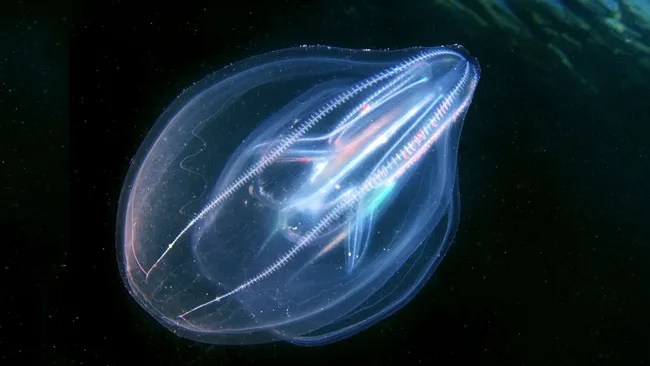In an astonishing accidental discovery, researchers at the University of Chicago’s Marine Biological Lab have uncovered a remarkable characteristic of the warty comb jelly, also known as the “sea walnut.”
These mysterious marine creatures can merge into a single, larger organism when injured, a development that showcases a unique biological phenomenon.

During routine maintenance on a collection of sea walnuts, researchers noticed an unusually large individual that was different from the others.
Interestingly, this creature appeared to possess two brains and two ends resembling tails. Closer study revealed that two comb jellies fused together to form one organism.
To test the consistency of this phenomenon, researchers intentionally removed small parts from some jellies and placed them in proximity to one another, resulting in a fusion success rate of approximately 90%.
This discovery, published in the journal Current Biology, indicates that the fusion process is rapid.
Remarkably, within a single night, two comb jellies combined seamlessly without any visible separation, synchronizing their nervous systems as evidenced by a unified startle response.
The degree of nervous system and digestive fusion exhibited by the jellies is unprecedented in any other species, even surpassing the fusion capabilities of the anglerfish.
The experiment further demonstrated that their digestive systems were linked post-fusion.
Researchers fed fluorescent shrimp to the fused entities and observed particles from one jelly’s ingestion traveling and being expelled from both ends.
The simultaneous integration of their anatomical systems suggests that these entities function nearly as an individual organism despite having distinct DNA and lacking hereditary transmission of their new fused form.
Though the ability to fuse has significantly captured scientific interest, it is considered a rare event in the natural habitat of these marine creatures. Injured comb jellies must be at close range to fuse, a situation unlikely in their expansive aquatic environment.
However, this fusion ability poses intriguing inquiries regarding nervous system regeneration, a field with significant implications for human medical advancements.
Kei Jokura, a researcher involved in the study, emphasized that understanding the mechanisms behind this biological phenomenon may greatly influence research on regeneration.
Looking forward, scientists are prepared to investigate whether this fascinating fusion characteristic extends to other comb jelly species, such as Bolinopsis mikado.
This research could potentially redefine our understanding of these deep-sea residents, once considered among the mysterious ancestors of life on Earth.
The journey of discovery often presents unexpected insights, opening doors to scientific breakthroughs that impact much more than initially anticipated.
In this case, the fusion capability of the comb jelly offers a captivating glimpse into the complex and often surprising world of marine biology.
